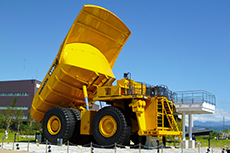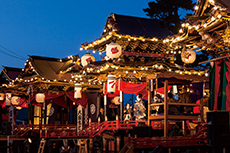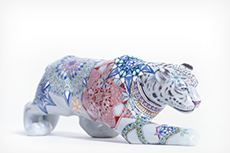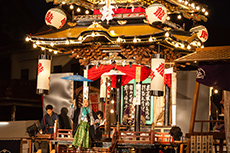Why Komatsu?
Heritage of Stone
Japan Heritage




Blessed with a land rich in precious stone, Komatsu’s 20-million-year-old Heritage of Stone is nationally-recognized as Japan Heritage!
From the carving of prized gemstone beads in ancient times, to the flourishing of mines that were the bedrock of today’s world-renowned KOMATSU LTD., and today’s continued use of local stone for grand sites such as the National Diet Building.
Stone has been an inseparable part of Komatsu life from past to present.
Click to learn more on the story of Komatsu’s Gems & Stones, and where you may discover them!




Kutani Ceramics
Crafts




Since its revival in the 1800s, Kutani Ware have gained worldwide popularity as one of Japan’s enduring traditional crafts. And the starting point of that revival was right here in Komatsu, where the source of pottery stone perfect for Kutani craft was discovered. It remains the only source of this raw material essential to modern Kutani production.
From the discovery of good material came the flourishing of kilns in the area, and the grooming of skilled painters that give Kutani their distinct vibrant colors. Many of these painters would go on to gain nationwide recognition, including Tokuda Yasokichi III and Yoshita Minori, both conferred the title of Living National Treasure.
Today, Komatsu remains a seedbed for kilns and painters that continue to evolve the craft. Many of these kilns and studios welcome you to step in for an intimate encounter with the artisans in action, and offer workshops to craft your own one-of-a-kind masterpiece under professional guidance.
As a proud local craft embedded in local lives, many eateries also incorporate these wares as part of both gastronomically and visually appealing meals.




Kabuki
Theater




Inscribed in UNESCO’s Intangible Cultural Heritage list, kabuki is one of Japan’s representative performing arts with centuries of history. And Komatsu is one of few places where kabuki continues to be performed as living tradition.
A distinctive aspect of kabuki is that all acting roles, including the female ones, are performed only by men. The Komatsu tradition however, overturns that norm: during the city’s largest festival in May, Otabi Matsuri, kabuki plays are performed exclusively by little girls!
And upon special stages: festival floats called hikiyama, which resemble a mini kabuki stage.
Another source of Komatsu’s strongly-rooted kabuki tradition is “Kanjincho”, a famous legend and one of Japan’s “18 Best Kabuki Plays”. The setting of this tale was the Ataka-no-seki Barrier Ruins, lying by the Komatsu coast. This play too continues to be performed by elementary school children in Komatsu every year, as part of the Japan Children’s Kabuki Festival.
Even if you can’t make it for the festivals, you can hear the stories behind Komatsu’s kabuki tradition at the MIYOSSA Gallery and Kanjincho Museum, and even try your hand at kabuki make-up and costume!




Nature




With the mountains on one side and the Sea of Japan on the other, Komatsu is one of the rare places in Japan where nature-lovers can enjoy the best of both worlds. Cycle along the coast, and watch sunset at Ataka Beach. Catch a view of snow-capped Mt. Hakusan, one of Japan’s Three Holy Mountains alongside Mt. Fuji, from across the vast Lake Kiba.
Being blessed by mountain and sea also means a rich food culture: you will find tranquil cafes in the most unexpected places (i.e hidden within our mountains and forests), where you can savor fresh catch & harvests picked right from your surroundings.
Or partake in the picking yourself, at hamlets such as Takigahara, where the local community welcome you to join in their daily farming routine.
Like anywhere else in Japan, you can of course enjoy plenty of sakura and autumn spots as well. Peacefully, all to yourself.




Industry




By now, you may be wondering about the origins of international machine-maker, KOMATSU LTD. Yes, it was indeed named after its birthplace, Komatsu City. In fact, the world-famous manufacturer’s roots can be traced back to the Yusenji Copper Mine, which remains in Komatsu today as a memorial park rich in both nature and history. Other traces of the company’s history remain scattered around Komatsu, including Komatsu no Mori, where the world’s largest dump truck is displayed, alongside the only giant excavator of its kind found in Japan.
Of course, the birth of KOMATSU LTD. in Komatsu City was no coincidence. The resource-rich environment and spirit of innovation has made it a fertile bedrock for many other creative industries such as vehicle, robot & material-makers, and the aforementioned craft of Kutani Ware. And now, many of these creators have opened their doors for you to take a rare peek into their workspaces, and hear their inspiring stories.
You can join some of these tours and experiences anytime of year, via Komatsu’s own unique GEMBA Project!






















